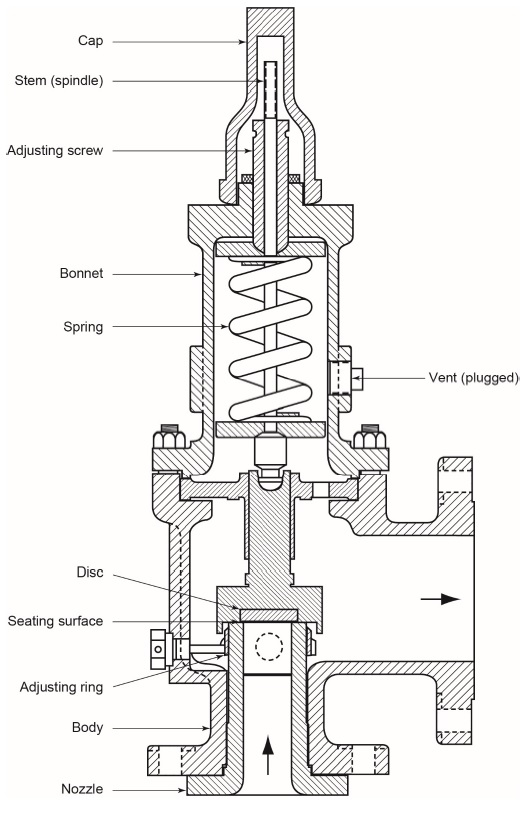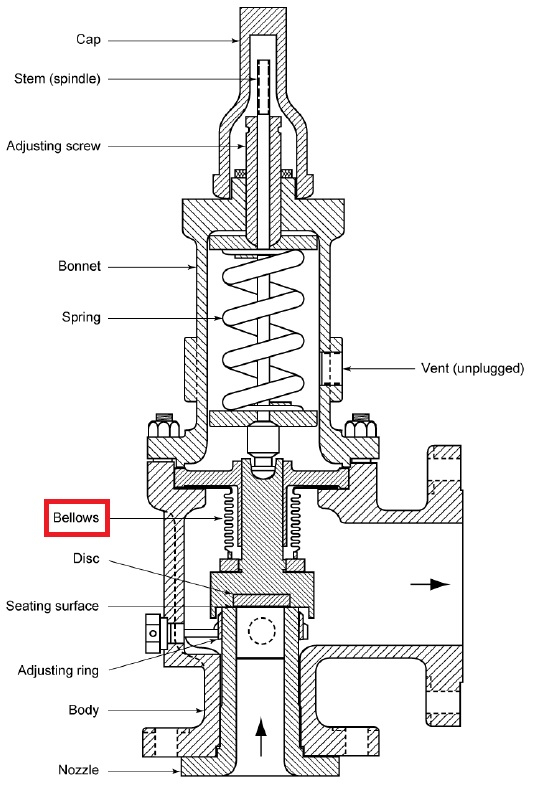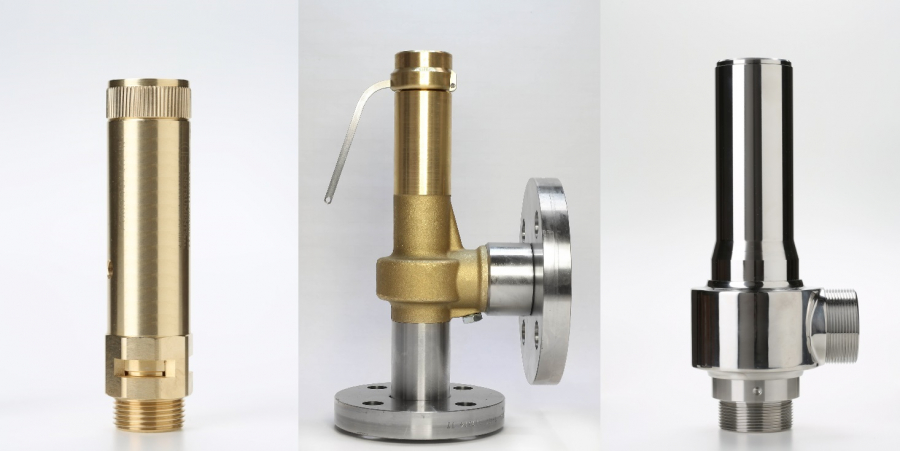Learn More > Safety Valves Types And Characteristics
Safety Valves Types And Characteristics
Conventional safety valves
Conventional safety valves can be significantly impacted by backpressure in the discharge system, which comprises two main components: superimposed backpressure and built-up backpressure. Superimposed backpressure refers to the static pressure existing on the outlet side of a closed valve, while built-up backpressure is the additional pressure generated on the outlet side during valve discharge.
Typically, conventional safety valves can withstand a maximum backpressure of 10% of the set pressure. Beyond this threshold, the valve's opening and reclosing pressure may be greatly affected, potentially leading to malfunctions and compromising the safety function of the pressure safety valve (PSV).

Balanced bellows safety valves
The bellows in safety valves plays a crucial role in mitigating the effects of backpressure on valve performance. By preventing backpressure from acting on the upper side of the disc within the bellows area, a balanced force is maintained on the disc, ensuring minimal impact on the valve's opening pressure. The bellows vent facilitates free airflow, allowing the bellows to expand or contract as needed.
However, concerns about bellows failure persist, as it could alter the valve's set pressure and capacity. Hence, it's essential to have mechanisms in place to detect any abnormal fluid flow through the bellows vents. Moreover, apart from backpressure mitigation, bellows also function to isolate the spindle guide and spring from corrosive process fluids, safeguarding the valve's integrity and longevity.

Safety valves material
In safety valves, only the inlet nozzle and the disc come into contact with the process fluid during discharge, as they are the wetted parts. Given that safety valves operate infrequently under normal conditions, the majority of components can be manufactured using materials suitable for various applications.
The main components of safety valves are typically made from specific materials based on their intended use:
- Brass or Bronze: Commonly employed for threaded valves in general-duty applications involving steam, non-corrosive gas, and water.
- Carbon Steel: Usually utilized for process flanged type valves.
- Stainless Steel: Applied in scenarios where cleanliness, corrosion resistance, or use in food and pharmaceutical applications is critical.
- PVC: Used as an alternative to stainless steel where corrosion resistance is critical.
The spring is a vital component in safety valves, demanding reliable performance within specified parameters. Standard safety valves often utilize carbon steel for moderate temperatures and stainless steel for duties involving corrosion or clean steam. Special materials like monel, hastelloy, and 'inconel' may be employed for sour gas and high-temperature applications.
When selecting seating material for safety valves, two primary options are considered: metal-to-metal seats and resilient discs. Metal-to-metal seats, excel in high-temperature environments like steam applications. Conversely, resilient discs like Viton, FFKM or EPDM, offer superior sealing for gas or liquid applications where tighter shut-off is essential.
In essence, the material selection for safety valve components is tailored to the specific requirements of the application, ensuring optimal performance and longevity in diverse industrial settings.

Lever, test gag, actuator or simple cap?
Standard safety valves can be equipped with an easing lever, serving the function of manually lifting the valve to ensure its operability when pressure exceeds 75% of the set pressure. This feature is often mandatory by national standards and insurance regulations, especially in steam and hot water applications. For instance, according to the ASME Boiler and Pressure Vessel Code, pressure relief valves must incorporate a lever if utilized for air, water temperatures exceeding 60°C, and steam.
Alternatively, a test gag can be employed as a substitute for the easing lever. By unscrewing the test gag, located atop the bonnet, the valve shutter can be manually lifted. Once the desired action is completed, screwing the ring nut back into place restores the valve to its certified set pressure.
As an alternative to the above solutions, it is possible to use as a piston actuator for the manual lift of the shutter. Applying an air pressure in the actuator it is possible to partially reducing the valve spring force allowing the shutter to lift at a lower pressure than the set value. This alternative is usually applied for food and pharmaceutical applications where the cleaning of the valve internal parts is usual and crucial. The piston actuator is usually available for safety valves with set pressure up to 8barg.
For the applications where a lever is unnecessary, a cap can be utilized to protect the setting screw. This cap, when equipped with a gasket to ensures the gastight integrity of the bonnet, making it suitable for liquid or other services where a lever is deemed unnecessary.